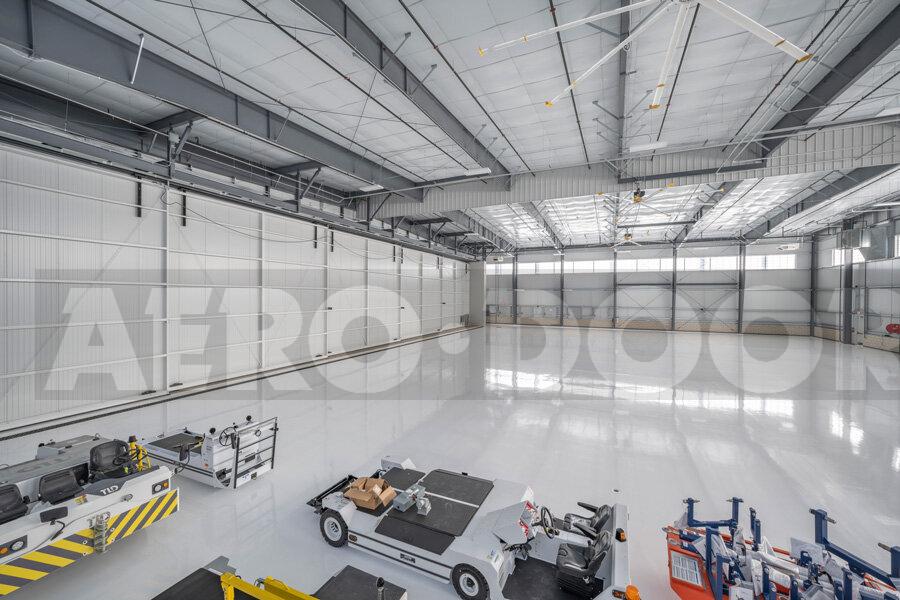The main components of a bottom rolling door are the bottom rail that sits in the slab, the top track that attaches to the building header, and the motorized door panels that glide across the track when the door moves.
The hangar door is made from structural steel and the load is imposed onto the wheels. This engineering advantage means bottom rolling doors can be much wider and taller than most alternatives. For this reason alone, it’s a popular choice for aircraft, rockets and boats.
If you’re like most, you rarely pause to consider any impact the choice of door has on the functionality of the building. Colors, architectural detail and landscaping all contribute to a building, but make no mistake, functionality inevitably suffers if the door doesn’t deliver. But this isn’t just about aesthetics. The right door can directly benefit the bottom line, both right away and over the long term— so the door should never be an afterthought. Learn more about choosing a Bottom Rolling Hangar Doors for your Aircraft.
Building Performance
In a busy hangar, the door gets opened and closed so frequently that temperatures inside go up and down like a rollercoaster; some doors may remain open all day. That isn’t such a big deal in a private hangar, but it’s a much different story if people are working on a plane, or there’s office space to consider.
The temperature matters not only for comfort but for energy bills too. Bottom rolling doors can accommodate both insulated wall panels and interior liner panels.
For many years, door panels have often contained glass to allow natural light to shine in, but more recently, clients are using performance translucent panels that provide an elegant lighting solution while enhancing indoor environmental quality. More than ever, hangar doors are helping clients to meet energy and environmental design standards.
Hangar Door Configuration
When refurbishing or building a new aircraft hangar, you must consider not just the size but how the door will maneuver. Understanding hangar door configuration choices and the purpose of each will help simplify the buying process.
Bottom rolling doors can open and close in different ways, and this is one of the reasons architects and engineers like to specify them.
Traditionally, they open from a central split, while others slide right to left or left to right. Then there are configurations that only move within the opening and don’t require extra space for the panels to stack inside when the door is open. The latter is a big favorite on openings that exceed 200 feet in width.
For every project, one of these door configurations will far and away surpass the others and it’s up to a good salesman to find the right one for you.
Return for Your Investment
Look to a hangar door as a reliable means of boosting future resale value. Times have changed and hangar doors play a central role, both aesthetically and practically. Steel is great for no matter where you live, but if you’re near the coast you’ll need to ensure the steel is prepared correctly. Sandblasting will ensure that any mill scale, oil and rust are removed before the primer is applied. If you want to spend more money, a zinc coating and an epoxy primer will better protect steel surfaces from corrosion.
Wheels should be time-tested and proven to stand up to heavy use; the same can be said of the rollers across the top of the door that glide on the rail. Expect some components to be durable but replaceable over time such as weather seals and brush seals.
The best advice is to understand the upkeep requirements of any door on your radar. Don’t commit to purchasing one until you know what the materials are made from and how they will look after you later.
This article appeared in September 2020 edition of Metal Construction News.
Paul has over 14-years of sales and marketing experience in the hangar door industry. Prior to this, Paul spent 8 years working in a sales division of Apple Inc, where skills in supply chain, selling and customer service were taught at a multinational level.


